
Chalchuapa: A Journey Through History and Culture in El Salvador
Discover Chalchuapa, El Salvador's hidden gem, where ancient ruins, vibrant culture, and stunning natural beauty come together for an unforgettable experience.
Chalchuapa, a small town in El Salvador, is a hidden gem rich in history and culture. Located in the western part of the country, it offers a unique blend of ancient ruins and vibrant local traditions. The town is best known for its archaeological sites, which date back to the pre-Columbian era. Among these, the Tazumal ruins stand out, offering visitors a glimpse into the lives of the ancient Maya civilization. The well-preserved pyramids and ceremonial structures are a must-see for history enthusiasts and curious travelers alike. Apart from its historical significance, Chalchuapa boasts a warm and welcoming atmosphere. The local markets are bustling with activity, offering a variety of traditional foods and handmade crafts. The town's central park is a great place to relax and enjoy the laid-back vibe. Here, you can often find local musicians playing and families enjoying their day out. The town also celebrates several festivals throughout the year, providing visitors with an authentic cultural experience. Nature lovers will appreciate the scenic beauty surrounding Chalchuapa. The nearby Lago de Coatepeque, a stunning crater lake, offers opportunities for swimming, boating, and picnicking. The lush landscapes and serene environment make it a perfect day trip destination. Whether you're a history buff, a culture enthusiast, or simply looking to unwind, Chalchuapa has something to offer for everyone.
Local tips in Chalchuapa
- Visit the Tazumal ruins early in the morning to avoid crowds and the midday heat.
- Bring cash, as many local vendors at the markets do not accept credit cards.
- Try the local pupusas, a traditional Salvadoran dish, at one of the street food stalls.
- Attend a local festival if your visit coincides with one. It's a great way to experience the local culture.
- Consider hiring a local guide for the archaeological sites to gain deeper insights into the history and significance of the ruins.
- Plan a day trip to Lago de Coatepeque for a relaxing break amidst nature.
Chalchuapa: A Journey Through History and Culture in El Salvador
Chalchuapa, a small town in El Salvador, is a hidden gem rich in history and culture. Located in the western part of the country, it offers a unique blend of ancient ruins and vibrant local traditions. The town is best known for its archaeological sites, which date back to the pre-Columbian era. Among these, the Tazumal ruins stand out, offering visitors a glimpse into the lives of the ancient Maya civilization. The well-preserved pyramids and ceremonial structures are a must-see for history enthusiasts and curious travelers alike. Apart from its historical significance, Chalchuapa boasts a warm and welcoming atmosphere. The local markets are bustling with activity, offering a variety of traditional foods and handmade crafts. The town's central park is a great place to relax and enjoy the laid-back vibe. Here, you can often find local musicians playing and families enjoying their day out. The town also celebrates several festivals throughout the year, providing visitors with an authentic cultural experience. Nature lovers will appreciate the scenic beauty surrounding Chalchuapa. The nearby Lago de Coatepeque, a stunning crater lake, offers opportunities for swimming, boating, and picnicking. The lush landscapes and serene environment make it a perfect day trip destination. Whether you're a history buff, a culture enthusiast, or simply looking to unwind, Chalchuapa has something to offer for everyone.
When is the best time to go to Chalchuapa?
Iconic landmarks you can’t miss
Parque Arqueológico Tazumal
Discover the ancient Maya civilization at Parque Arqueológico Tazumal, a captivating archaeological museum filled with history and stunning architecture.
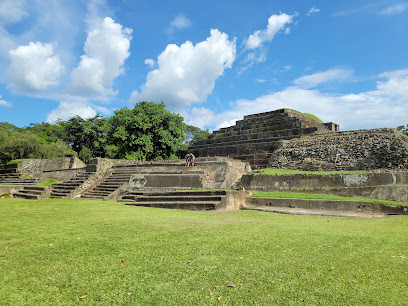
Tazumal Archaeological Park
Discover the ancient Mayan civilization at Tazumal Archaeological Park, a captivating site filled with history, culture, and breathtaking ruins in El Salvador.

Devil's Gate Lookout
Discover the breathtaking views and serene beauty of Devil's Gate Lookout in Panchimalco, the perfect escape for nature lovers and photographers alike.

Casa Blanca Archaeological Site
Discover El Salvador's rich ancient heritage at Casa Blanca Archaeological Site, where history comes alive through stunning ruins and captivating artifacts.
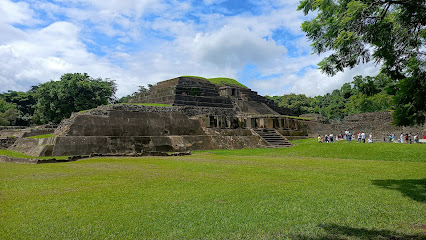
José Matias Delgado Park
Explore José Matias Delgado Park in Chalchuapa, a serene escape with lush greenery, walking paths, and a vibrant atmosphere perfect for relaxation and recreation.
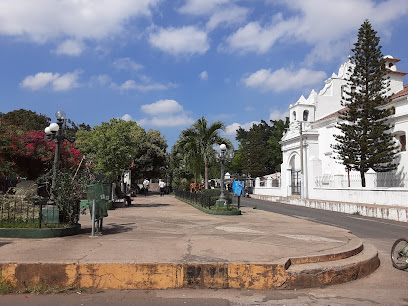
Balneario El Trapiche. Chalchuapa
Experience the ultimate day of fun and relaxation at Balneario El Trapiche, Chalchuapa's premier water park for families and adventure seekers.
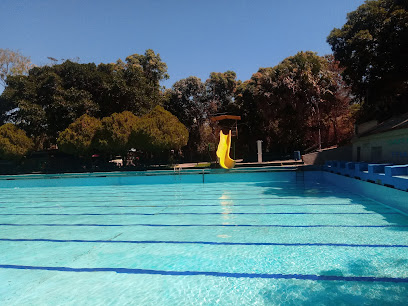
Parroquia Santiago Apostol
Discover the beauty and tranquility of Parroquia Santiago Apostol, a historical Catholic church in Chalchuapa, El Salvador, rich in culture and spirituality.

Finca San Antonio
Discover tranquility at Finca San Antonio, a charming farmstay in Chalchuapa, where the rich agricultural landscape meets authentic local experiences.
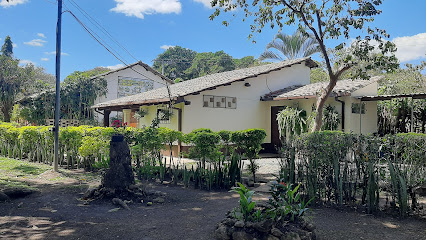
Monumento Justo Rufino Barrios
Discover the rich history of El Salvador at the Monumento Justo Rufino Barrios, a stunning memorial honoring a pivotal national leader.
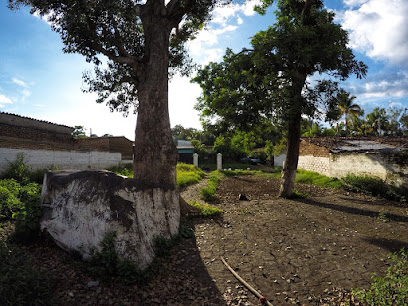
RastaMaya Tours
Explore Chalchuapa's heritage and landscapes with RastaMaya Tours, where adventure meets culture in the heart of El Salvador.
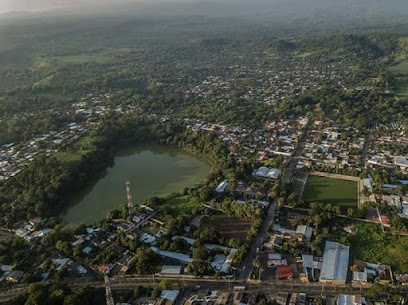
La Iglesia de Jesucristo de los Santos de los Últimos Días
Discover the serene La Iglesia de Jesucristo de los Santos de los Últimos Días in Chalchuapa, a spiritual landmark rich in community and faith.

Desvió chalchuapa
Explore the historical wonders of Desvío Chalchuapa, a captivating landmark in El Salvador, rich in culture and archaeological significance.

Casa de los leonés
Explore the enchanting Casa de los Leones in Chalchuapa, a cultural gem showcasing stunning architecture and rich Salvadoran heritage.
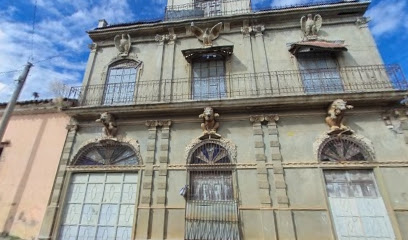
Plaza Rufino Barrios
Discover the charm of Plaza Rufino Barrios, a serene city park in Chalchuapa, perfect for relaxation and cultural immersion.
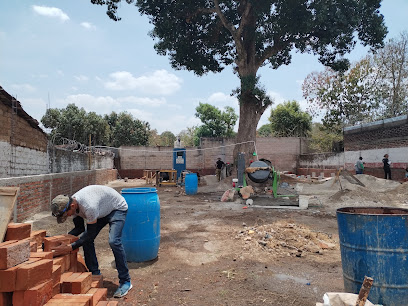
Laguna enmascarada
Discover the enchanting beauty of Laguna Enmascarada in Chalchuapa, a hidden lagoon offering tranquility and adventure amidst stunning natural landscapes.
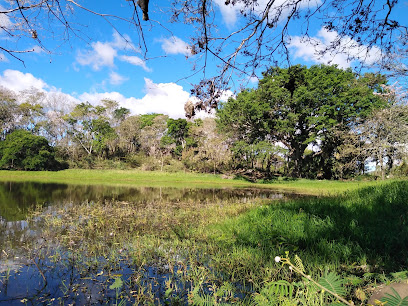
Unmissable attractions to see
Parque Nacional Cerro Verde
Explore the breathtaking landscapes and diverse wildlife of Parque Nacional Cerro Verde, a must-visit national park in El Salvador for nature lovers.
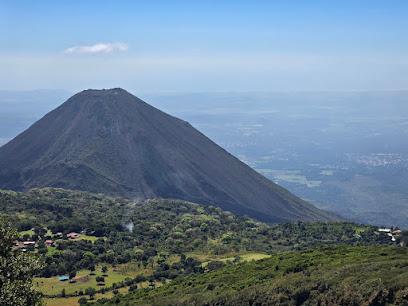
Parque Libertad
Explore the lush landscapes and vibrant culture of Parque Libertad, a serene escape in Santa Ana, El Salvador, perfect for relaxation and culinary adventures.
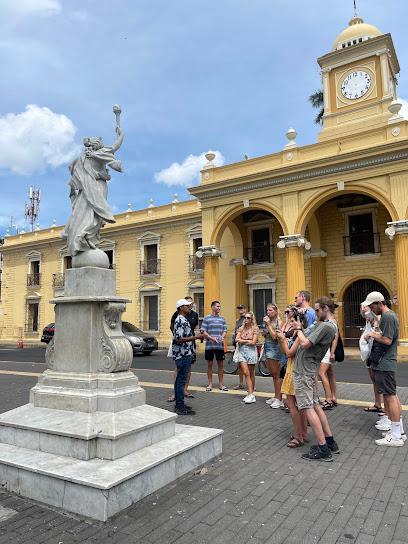
Parque Arqueológico Tazumal
Discover the ancient Mayan civilization at Parque Arqueológico Tazumal in Chalchuapa, a captivating archaeological site with stunning ruins and rich history.
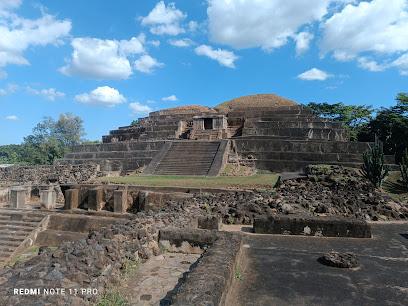
Santa Teresa Hot Springs.
Discover relaxation and healing at Santa Teresa Hot Springs, a serene destination near Ahuachapán with natural thermal pools and stunning landscapes.

Catedral de Nuestra Señora Santa Ana
Explore the stunning Catedral de Nuestra Señora Santa Ana, an architectural gem in the heart of Santa Ana, El Salvador, rich in history and beauty.
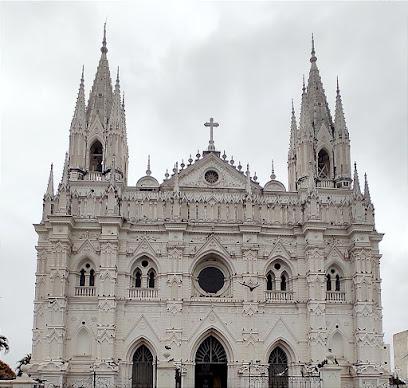
Lago de Coatepeque
Discover the beauty of Lago de Coatepeque, a stunning volcanic lake in El Salvador, perfect for relaxation, adventure, and cultural experiences.
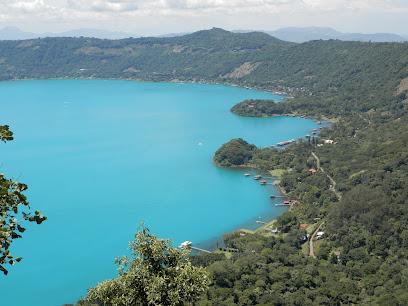
Parque Arqueológico San Andrés
Explore the rich heritage of the Mayans at Parque Arqueológico San Andrés, an archaeological gem in El Salvador teeming with history and culture.
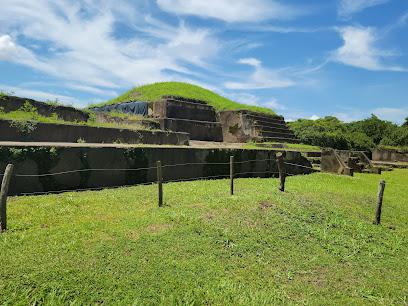
El Salto de Malacatiupán
Experience the breathtaking beauty of El Salto de Malacatiupán, a stunning waterfall in Ahuachapan, El Salvador, perfect for nature lovers and adventure seekers.
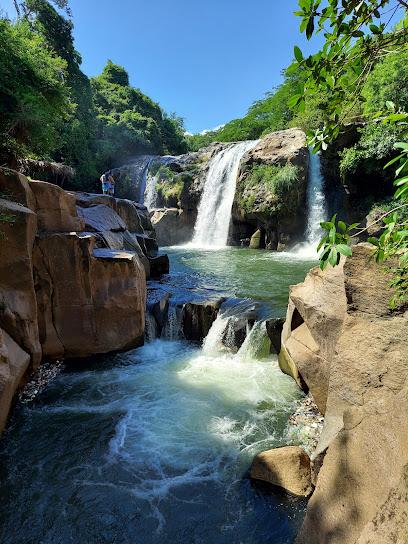
Portezuelo Parque de Aventuras
Discover thrilling adventures and serene camping at Portezuelo Parque de Aventuras in Juayua, El Salvador, where nature and excitement meet.
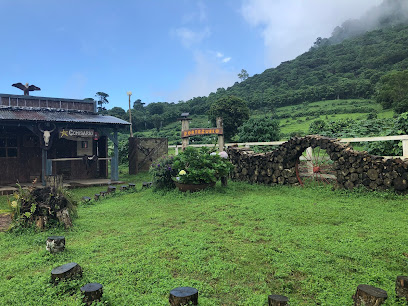
Parque Arqueológico Joya de Cerén
Explore Joya de Cerén, the Pompeii of the Americas, and uncover the ancient secrets of a preserved Mesoamerican village.
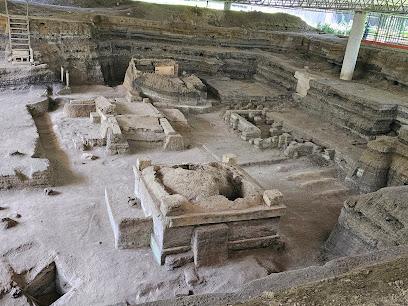
National Theater of Santa Ana
Discover the National Theater of Santa Ana, a cultural gem showcasing the best of Salvadoran performing arts in a stunning historical setting.
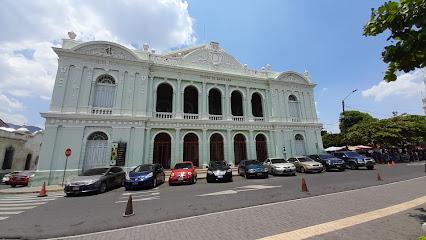
Casa Blanca Archaeological Site
Explore the ancient wonders of Casa Blanca Archaeological Site, a captivating glimpse into the rich history of the Maya civilization in El Salvador.
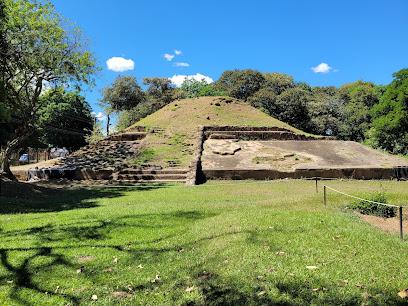
Cerro Verde National Park
Explore the stunning beauty of Cerro Verde National Park, a volcanic paradise with breathtaking views and diverse wildlife in El Salvador.
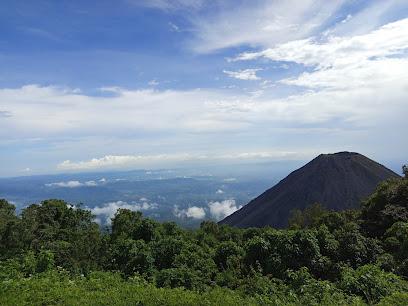
Parque Acuático Galicia
Discover Parque Acuático Galicia, the ultimate water park in El Salvador, offering thrilling slides, family fun, and a vibrant atmosphere for all ages.
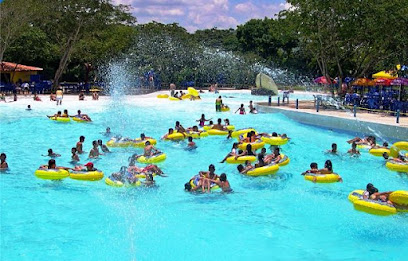
Parque Recreativo Sihuatehuacán
Experience the ultimate water adventure at Parque Recreativo Sihuatehuacán, a vibrant oasis for relaxation and fun in Santa Ana, El Salvador.
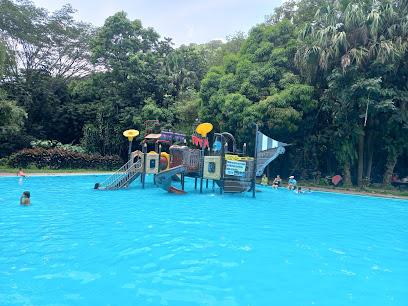
Essential places to dine
Lover's Steak House
Discover exquisite steaks and warm hospitality at Lover's Steak House in Santa Ana - a culinary delight not to be missed!
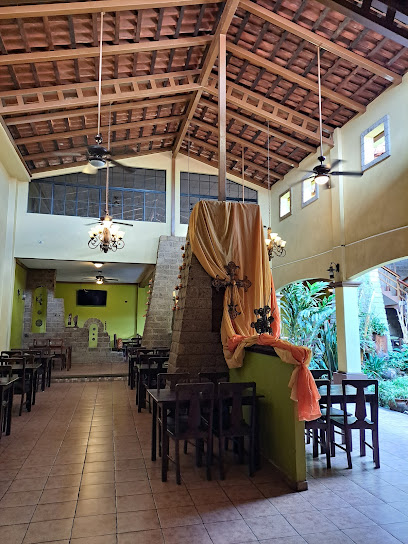
El Portal Chalchuapa
Experience authentic pizza at El Portal Chalchuapa – where quality ingredients meet delightful flavors in a welcoming atmosphere.
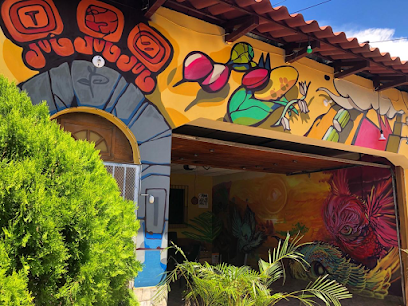
La Rinconchita
Discover authentic Salvadoran flavors at La Rinconchita in Chalchuapa - where tradition meets taste in every dish.
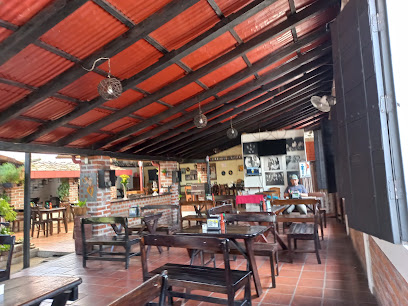
Restaurante Casa Blanca
Experience authentic Salvadoran cuisine at Restaurante Casa Blanca in Chalchuapa – a culinary treasure for every traveler.
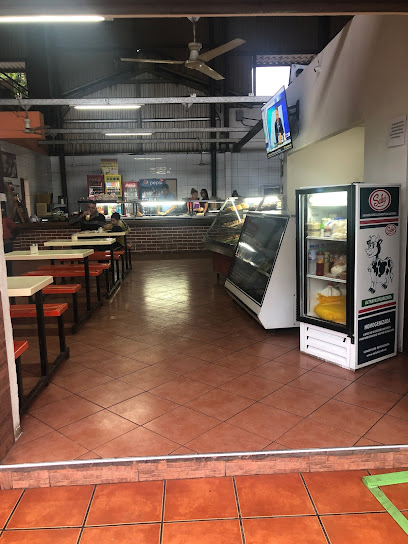
La Esperanza
Experience authentic Salvadoran flavors at La Esperanza Bistro in Chalchuapa – where delicious food meets warm hospitality.
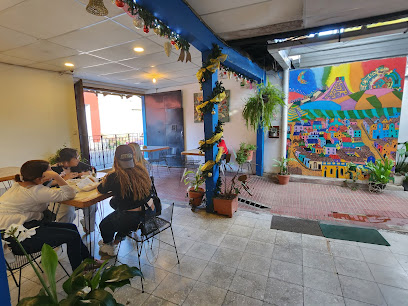
Tipicos Doña Sara
Experience authentic Salvadoran cuisine at Tipicos Doña Sara in Santa Ana – where tradition meets flavor in every dish.
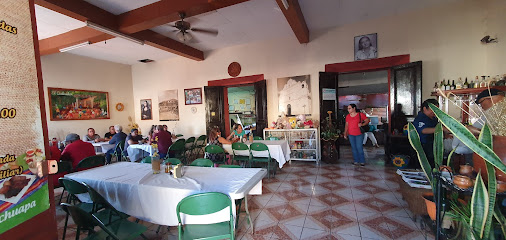
Yuquería Mayen
Experience authentic Salvadoran cuisine at Yuquería Mayen in Chalchuapa - a culinary gem showcasing rich flavors and cultural heritage.
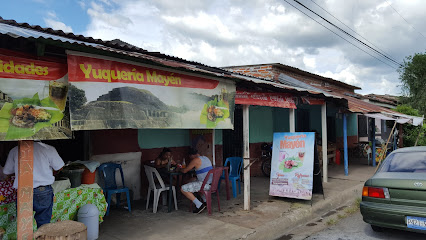
La Taqui Cardía
Discover authentic Salvadoran cuisine at La Taqui Cardía in Chalchuapa – where every meal tells a story.
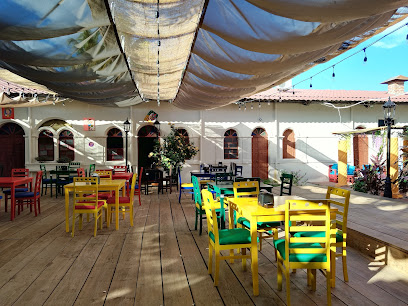
Restaurante del Inge
Experience authentic Salvadoran cuisine at Restaurante del Inge in Chalchuapa – where tradition meets flavor in a welcoming atmosphere.
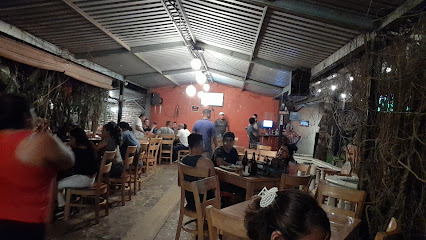
Casa Blanca Burger Restaurante
Discover delicious burgers and local flavors at Casa Blanca Burger Restaurante in Chalchuapa - A must-visit culinary gem!
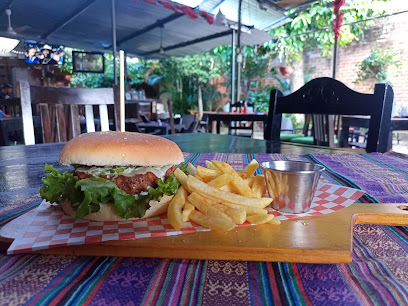
Panes Salsita
Experience authentic Salvadoran cuisine at Panes Salsita in Chalchuapa - where flavor meets affordability in a cozy setting.
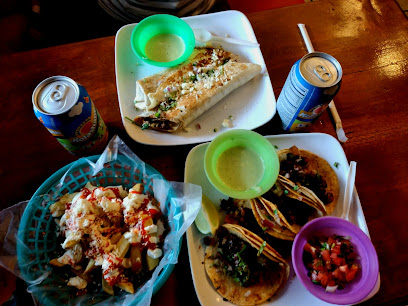
Mi Casa Comida casera
Experience authentic Salvadoran flavors at Mi Casa Comida Casera in Chalchuapa—where every dish feels like home.
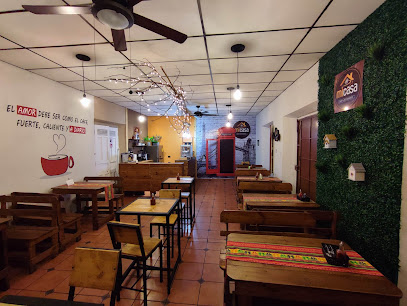
La Vaca y Cangrejito
Experience authentic Salvadoran cuisine at La Vaca y Cangrejito in Santa Ana – A culinary gem offering traditional flavors and vibrant atmosphere.
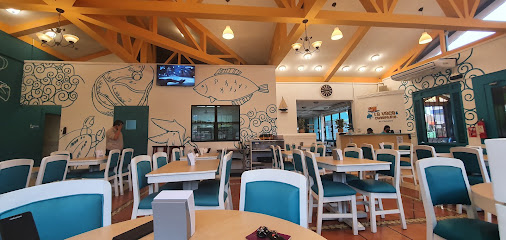
Las Catrinas Mexican Food Chalchuapa
Experience the vibrant flavors of authentic Mexican cuisine at Las Catrinas in Chalchuapa – a culinary gem for every traveler.
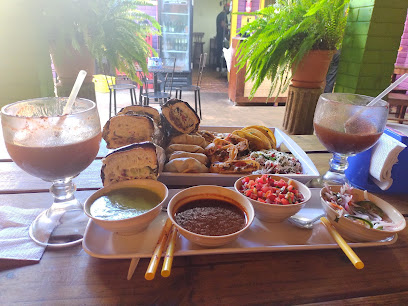
Seven Juices and Snacks
Discover refreshing juices and delicious snacks at Seven Juices and Snacks in Chalchuapa - a hidden gem for flavor enthusiasts.
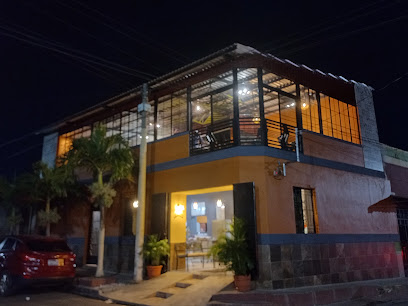
Markets, malls and hidden boutiques
Premium Center
Explore the charm of sustainable fashion at Premium Center in Chalchuapa, where unique second-hand treasures await every traveler.
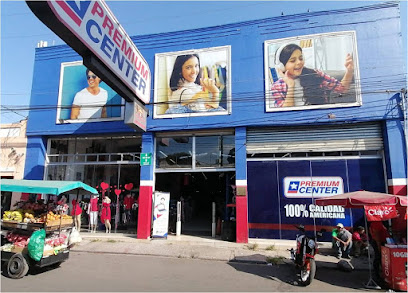
Tienda Krissia
Experience the charm of El Salvador at Tienda Krissia - your go-to general store for local treasures and unique souvenirs in Chalchuapa.
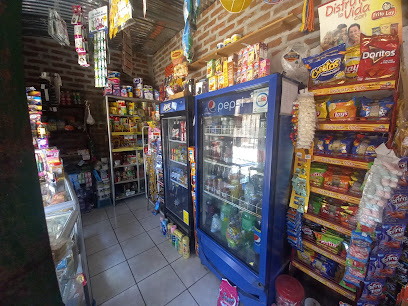
Bellisima's boutique and more
Explore Bellisima's Boutique in Chalchuapa for a unique selection of cosmetics and beauty products, where quality meets exceptional service.
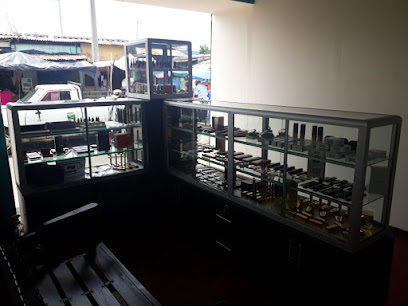
LIBRERIA GEXOPALI
Discover unique literature and cultural events at Libreria Gexopali, Chalchuapa's beloved bookstore for book lovers and travelers.

Tienda El Shadday
Discover authentic Salvadoran flavors and local products at Tienda El Shadday, your go-to supermarket in Chalchuapa.
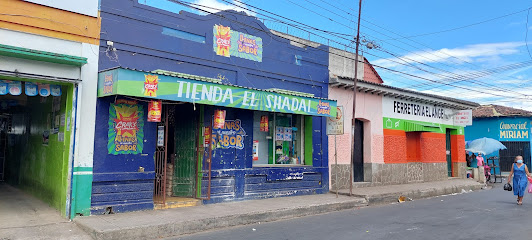
Miraflores Chalchuapa
Explore the unique Aboriginal art and handcrafted souvenirs at Miraflores Chalchuapa, a cultural gem in the heart of El Salvador.
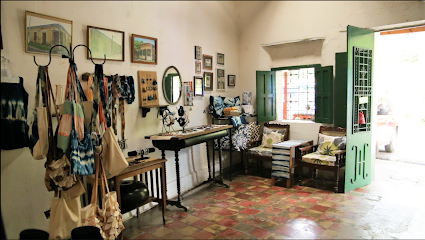
Anderson y daniela fashion
Discover unique fashion pieces at Anderson y Daniela Fashion in Chalchuapa, where local culture meets modern style.
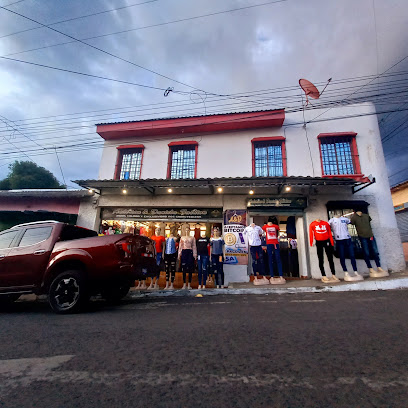
Tienda camila
Experience the vibrant local culture at Tienda Camila, a delightful dollar store in Chalchuapa, where affordability meets variety.

Comercial Divino Maestro
Discover the unique treasures of El Salvador at Comercial Divino Maestro, a home goods store in Chalchuapa filled with local artistry and charm.
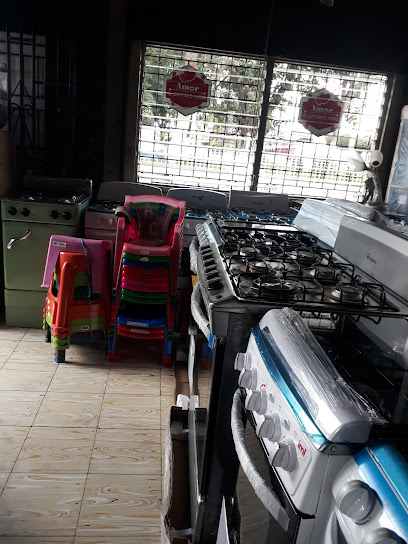
Comercial Casa San Miguel
Discover unique home goods and local crafts at Comercial Casa San Miguel in the vibrant Mercado Municipal de Chalchuapa, El Salvador.

Comercial Jazmin
Discover unique home goods and local crafts at Comercial Jazmin in Chalchuapa, a must-visit treasure trove for discerning travelers.
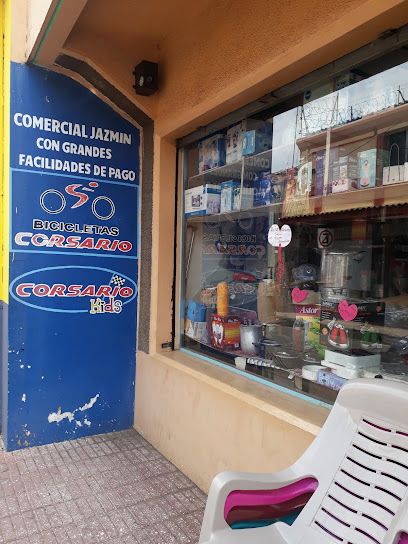
Local Creaciones Jey
Discover authentic Salvadoran crafts at Local Creaciones Jey, a charming store in Chalchuapa showcasing local artistry and sustainable practices.
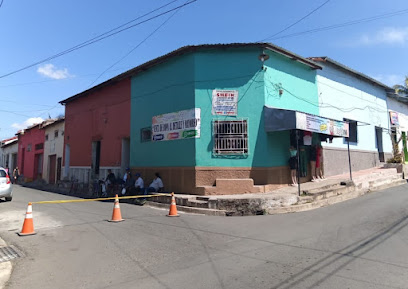
Variedades Blanqui
Explore the vibrant shopping scene at Variedades Blanqui, a cultural hub in Chalchuapa, offering unique local products and a lively atmosphere.

Nahara Boutique
Explore Nahara Boutique in Chalchuapa for a unique blend of contemporary and traditional Salvadorian fashion, creating the perfect shopping experience for travelers.

Almacenes Santa Lucía • Chalchuapa
Explore Almacenes Santa Lucía for unique clothing that captures the essence of Chalchuapa's vibrant culture and local fashion scene.
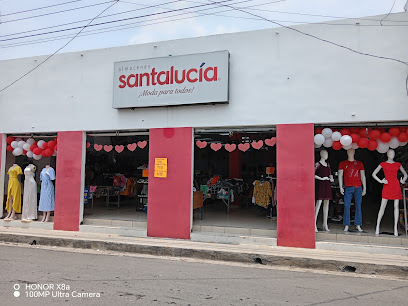
Essential bars & hidden hideouts
El Portal Chalchuapa
Discover the rich flavors of El Portal Chalchuapa, where delicious pizzas and a vibrant atmosphere await every traveler in Chalchuapa.
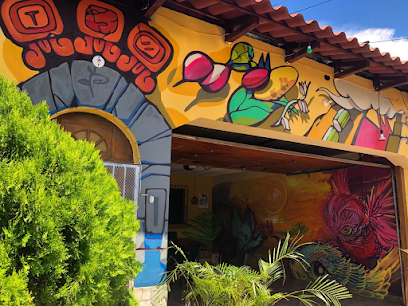
La Rinconchita
Discover La Rinconchita in Chalchuapa: a culinary haven showcasing authentic Salvadoran cuisine in a vibrant and welcoming atmosphere.
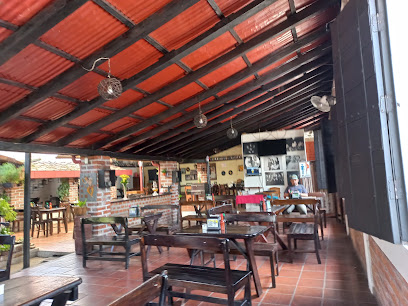
Restaurante Casa Blanca
Savor authentic El Salvadoran flavors at Restaurante Casa Blanca in Chalchuapa, where local cuisine meets warm hospitality.
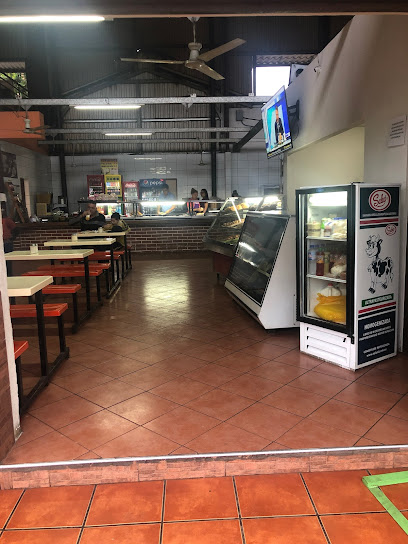
PAN DULCE, DESAYUNO EN CHALCHUAPA
Experience the flavors of Chalchuapa at Pan Dulce Bistro, where delicious breakfast meets a cozy atmosphere.
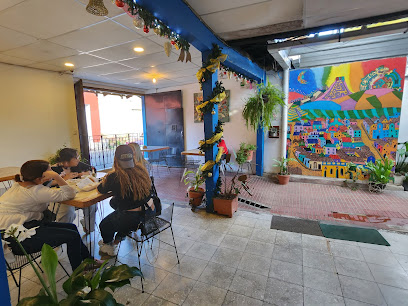
La Taqui Cardía
Discover La Taqui Cardía in Chalchuapa: Where authentic Salvadoran flavors meet lively entertainment for an unforgettable dining experience.
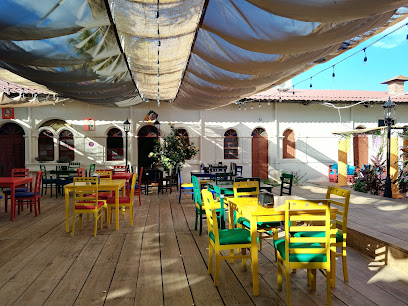
Pupuseria La Rumba
Experience the authentic taste of El Salvador at Pupuseria La Rumba, known for its delicious pupusas and warm atmosphere in Chalchuapa.
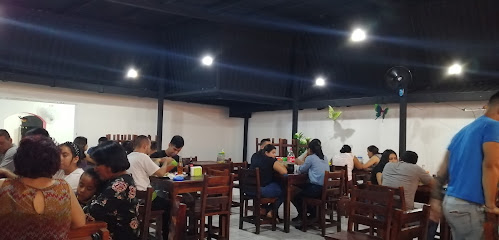
Seven Juices and Snacks
Discover the vibrant flavors of Chalchuapa at Seven Juices and Snacks, where fresh juices and tasty snacks await every traveler.
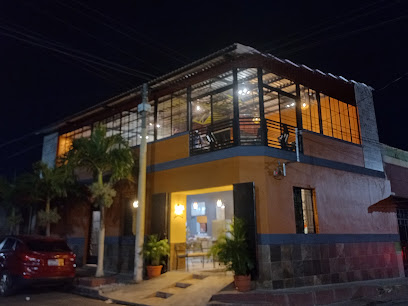
Merendero La Curva
Experience the vibrant flavors of local cuisine at Merendero La Curva in Chalchuapa, a beloved dining destination for tourists.
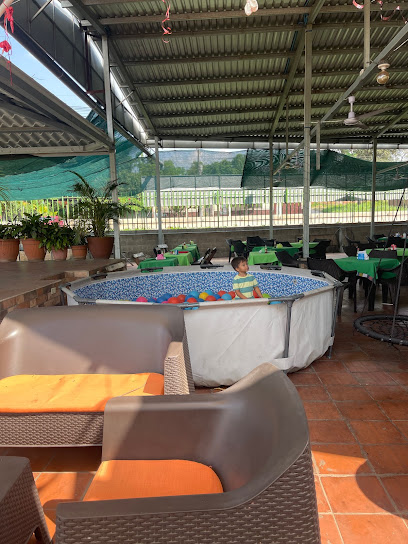
Roots Café Chalchuapa
Discover the vibrant tastes of El Salvador at Roots Café Chalchuapa, where local ingredients meet cozy dining.
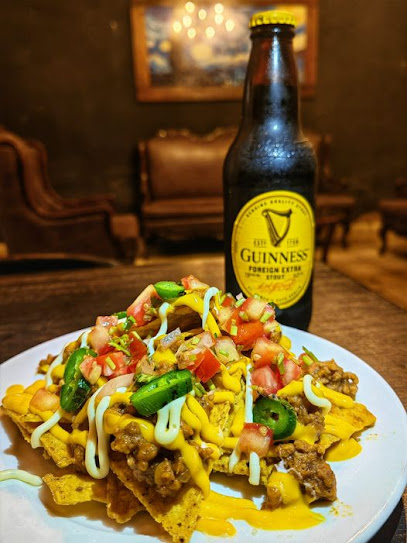
Yuqueria JADE
Discover the authentic flavors of El Salvador at Yuqueria JADE, a must-visit restaurant in Chalchuapa for an unforgettable culinary journey.
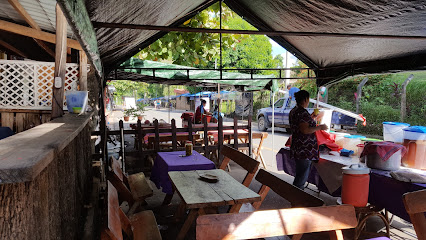
Minga's Cevicheria
Experience the vibrant flavors of the sea at Minga's Cevicheria in Chalchuapa, where exceptional ceviche meets a warm, inviting atmosphere.
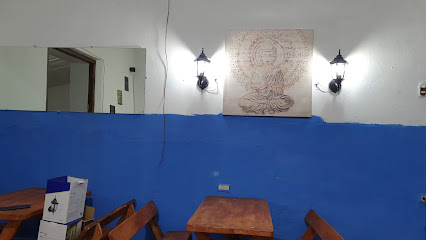
ALTA VISTA
Discover the authentic flavors of El Salvador at Alta Vista, a culinary gem in Chalchuapa offering delightful dishes in a warm atmosphere.
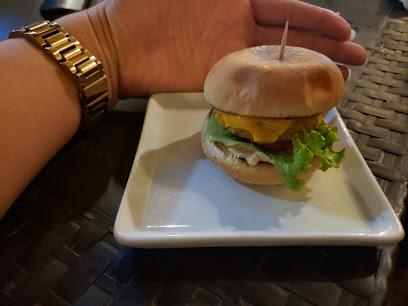
Maya Bistro Bar
Discover the vibrant flavors of Chalchuapa at Maya Bistro Bar, where every bite tells a story of culinary heritage.
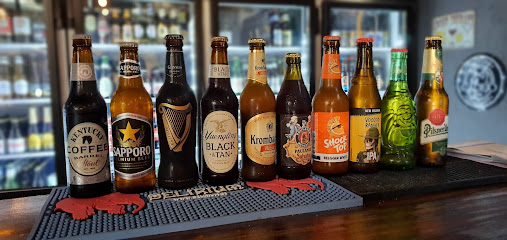
Frida bar café y cocina
Savor the essence of Chalchuapa at Frida Bar Café y Cocina, where delicious cuisine meets an inspiring ambiance in every dish.
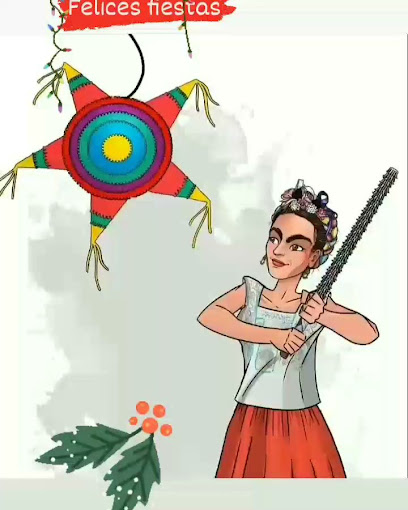
Cocteleria Lucita
Experience the vibrant flavors and lively atmosphere at Cocteleria Lucita in Chalchuapa, where cocktails and local cuisine come together.
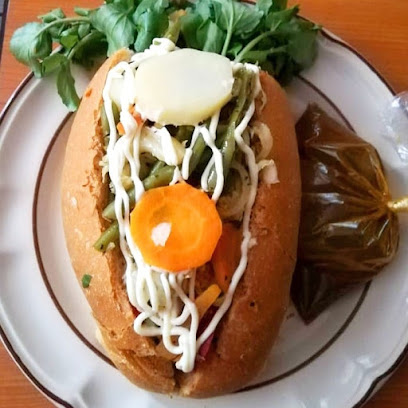
Local Phrases
-
- HelloHola
[oh-lah] - GoodbyeAdiós
[ah-dyohs] - YesSí
[see] - NoNo
[noh] - Please/You're welcomePor favor/De nada
[por fah-vohr/deh nah-dah] - Thank youGracias
[grah-syahs] - Excuse me/SorryDisculpe/Lo siento
[dees-kool-peh/loh syen-toh] - How are you?¿Cómo estás?
[koh-moh ehs-tahs] - Fine. And you?Bien. ¿Y tú?
[byen. ee too] - Do you speak English?¿Hablas inglés?
[ah-blahs een-glehs] - I don't understandNo entiendo
[noh ehn-tyen-doh]
- HelloHola
-
- I'd like to see the menu, pleaseMe gustaría ver el menú, por favor
[meh goos-tah-ree-ah vehr ehl meh-noo, por fah-vohr] - I don't eat meatNo como carne
[noh koh-moh kahr-neh] - Cheers!¡Salud!
[sah-lood] - I would like to pay, pleaseMe gustaría pagar, por favor
[meh goos-tah-ree-ah pah-gahr, por fah-vohr]
- I'd like to see the menu, pleaseMe gustaría ver el menú, por favor
-
- Help!¡Ayuda!
[ah-yoo-dah] - Go away!¡Vete!
[veh-teh] - Call the Police!¡Llama a la Policía!
[yah-mah ah lah poh-lee-see-ah] - Call a doctor!¡Llama a un doctor!
[yah-mah ah oon dohk-tohr] - I'm lostEstoy perdido/a
[ehs-toy pehr-dee-doh/ah] - I'm illEstoy enfermo/a
[ehs-toy ehn-fehr-moh/ah]
- Help!¡Ayuda!
-
- I'd like to buy...Me gustaría comprar...
[meh goos-tah-ree-ah kohm-prahr...] - I'm just lookingSolo estoy mirando
[soh-loh ehs-toy meer-ahn-doh] - How much is it?¿Cuánto cuesta?
[kwan-toh kwehs-tah] - That's too expensiveEso es demasiado caro
[eh-soh ehs deh-mah-see-ah-doh kah-roh] - Can you lower the price?¿Puede bajar el precio?
[pweh-deh bah-har ehl pree-syoh]
- I'd like to buy...Me gustaría comprar...
-
- What time is it?¿Qué hora es?
[keh oh-rah ehs] - It's one o'clockEs la una
[ehs lah oo-nah] - Half past (10)Media hora (10)
[meh-dee-ah oh-rah (diez)] - MorningMañana
[mah-nyah-nah] - AfternoonTarde
[tahr-deh] - EveningTarde/Noche
[tahr-deh/noh-cheh] - YesterdayAyer
[ah-yehr] - TodayHoy
[oy] - TomorrowMañana
[mah-nyah-nah] - 1Uno
[oo-noh] - 2Dos
[dohs] - 3Tres
[trehs] - 4Cuatro
[kwah-troh] - 5Cinco
[seen-koh] - 6Seis
[seys] - 7Siete
[syeh-teh] - 8Ocho
[oh-choh] - 9Nueve
[nweh-veh] - 10Diez
[dyehs]
- What time is it?¿Qué hora es?
-
- Where's a/the...?¿Dónde está...?
[dohn-deh ehs-tah] - What's the address?¿Cuál es la dirección?
[kwal ehs lah dee-rehk-syohn] - Can you show me (on the map)?¿Puedes mostrarme (en el mapa)?
[pweh-dehs mohs-trar-meh (ehn ehl mah-pah)] - When's the next (bus)?¿Cuándo es el próximo (autobús)?
[kwan-doh ehs ehl proh-ksee-moh (ow-toh-boos)] - A ticket (to ....)Un boleto (a ...)
[oon boh-leh-toh (ah ...)]
- Where's a/the...?¿Dónde está...?
History of Chalchuapa
-
Chalchuapa's history dates back to ancient times, with evidence of human settlements as early as 1200 BC. The region was originally inhabited by the Pipil people, who established complex societies and built significant structures. These early inhabitants are believed to have had extensive trade networks with other Mesoamerican cultures, contributing to the region's rich cultural tapestry.
-
Around the 5th century AD, Chalchuapa became a prominent center of Mayan civilization. The site of Tazumal, located within Chalchuapa, is one of the most important archaeological sites in El Salvador. Tazumal features a series of pyramids, temples, and tombs, showcasing the architectural prowess and religious significance of the Mayan people. This period marked a peak in cultural and economic development for the area.
-
The arrival of the Spanish in the 16th century brought significant changes to Chalchuapa. The Spanish conquest led to the decline of indigenous populations due to warfare, disease, and forced labor. During the colonial period, Chalchuapa became an important agricultural center, contributing to the production of indigo and other crops. The town's colonial architecture, including churches and municipal buildings, reflects its historical significance during this era.
-
The 19th century was a period of transformation for Chalchuapa. Following El Salvador's independence from Spain in 1821, the town witnessed various political and social changes. Chalchuapa played a role in the Central American Federation and experienced conflicts such as the Battle of Chalchuapa in 1885, where Salvadoran forces fought against Guatemalan troops. This battle was a key event in the region's military history.
-
In the 20th century, Chalchuapa continued to evolve, balancing its agricultural heritage with modern developments. Significant archaeological excavations in the latter half of the century uncovered more of the area's ancient past, particularly at the Tazumal and Casa Blanca sites. These discoveries have drawn international attention and contributed to a deeper understanding of Chalchuapa's historical importance.
-
Chalchuapa is known for its vibrant cultural heritage, with traditions that blend indigenous and Spanish influences. The town celebrates various festivals throughout the year, such as the Feast of San Sebastián, which features traditional music, dance, and religious processions. These celebrations reflect the community's strong cultural identity and offer visitors a unique insight into the local way of life.
Chalchuapa Essentials
-
Chalchuapa is located in the Santa Ana Department of El Salvador. The nearest international airport is El Salvador International Airport (SAL) in San Salvador, approximately 85 kilometers away. From San Salvador, you can take a direct bus, taxi, or rent a car to reach Chalchuapa. The journey typically takes around 1.5 to 2 hours by road. Buses are the most economical option, with regular services operated by various companies.
-
Once in Chalchuapa, you can explore the town on foot as many attractions are within walking distance. For longer trips, local taxis are readily available and relatively affordable. Public buses connect Chalchuapa to nearby towns and cities, but schedules can be irregular. Renting a car provides flexibility and allows you to explore the surrounding areas at your own pace.
-
The official currency in El Salvador is the US Dollar (USD). Credit cards are accepted in most hotels, restaurants, and larger shops, but it is advisable to carry cash, especially for smaller establishments and local markets. ATMs are available in Chalchuapa, but it is wise to withdraw sufficient cash in San Salvador before traveling to ensure you have enough funds.
-
Chalchuapa is generally a safe destination for tourists, but standard precautions should always be taken. Avoid walking alone at night in unfamiliar areas and keep an eye on your belongings in crowded places. Some areas in the surrounding region have higher crime rates, so it is best to stay within well-populated and well-lit areas. Always stay vigilant and aware of your surroundings.
-
In case of emergency, dial 911 for immediate assistance. Chalchuapa has local police stations and medical facilities available for emergencies. It is recommended to have travel insurance that covers medical emergencies. For minor health issues, there are pharmacies in Chalchuapa where you can purchase over-the-counter medications.
-
Fashion: Do dress modestly, especially when visiting religious sites. Avoid wearing overly revealing clothing. Religion: Do respect local customs and traditions. Always cover your head when entering churches. Public Transport: Do be respectful and give up your seat to elderly passengers. Don’t eat or drink on public transport. Greetings: Do greet people with a handshake. A slight bow of the head is also a sign of respect. Eating & Drinking: Do try local delicacies and accept food offerings graciously. Don’t refuse hospitality, as it is considered impolite.
-
To experience Chalchuapa like a local, visit the local markets where you can buy fresh produce and traditional Salvadoran goods. Engage with locals, as they are often friendly and willing to share stories about the town's history and culture. Don’t miss visiting Tazumal, a significant archaeological site with Mayan ruins. For a unique experience, try the local pupusas, a traditional Salvadoran dish, at one of the town's many eateries.
Trending Landmark in Chalchuapa
-
Parque Arqueológico Tazumal
-
Tazumal Archaeological Park
-
Devil's Gate Lookout
-
Casa Blanca Archaeological Site
-
José Matias Delgado Park
-
Balneario El Trapiche. Chalchuapa
-
Parroquia Santiago Apostol
-
Finca San Antonio
-
Monumento Justo Rufino Barrios
-
RastaMaya Tours
-
La Iglesia de Jesucristo de los Santos de los Últimos Días
-
Desvió chalchuapa
-
Casa de los leonés
-
Plaza Rufino Barrios
-
Laguna enmascarada
Nearby Cities to Chalchuapa
-
Things To Do in Santa Ana
-
Things To Do in San Salvador
-
Things To Do in La Libertad
-
Things To Do in Suchitoto
-
Things To Do in Copán Ruinas
-
Things To Do in Guatemala City
-
Things To Do in Antigua Guatemala
-
Things To Do in Santa Rosa de Copán
-
Things To Do in Gracias
-
Things To Do in San Miguel
-
Things To Do in Panajachel
-
Things To Do in Lake Atitlán
-
Things To Do in Chichicastenango
-
Things To Do in Rio Dulce
-
Things To Do in Quetzaltenango






